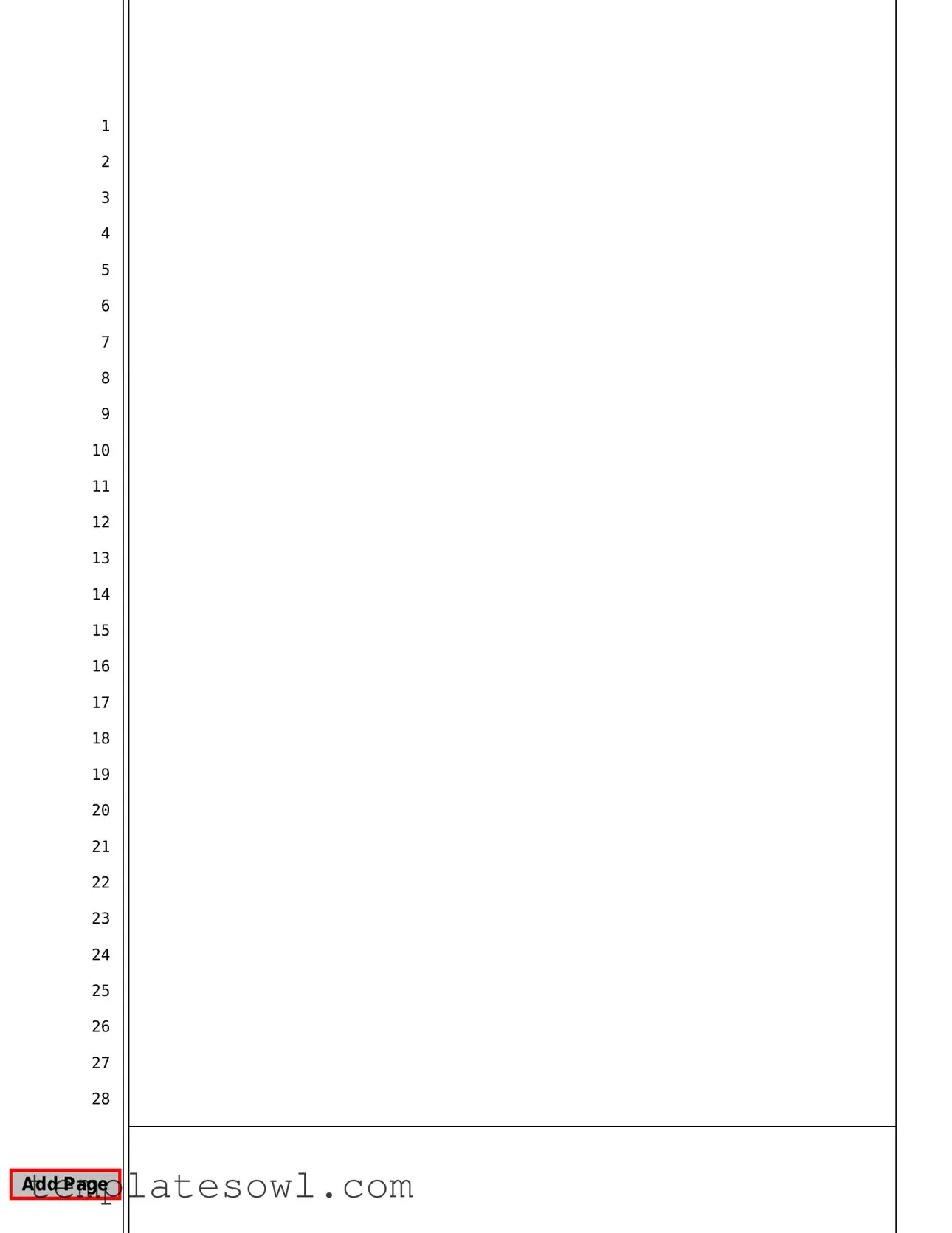What is a Legal Pleading Form?
A Legal Pleading Form is a standardized document used for court filings. It provides a structured way to present your case to the court, ensuring that all necessary information is included and correctly formatted. This form is essential in legal proceedings, helping to maintain clarity and organization in the presentation of legal arguments and motions.
Why is the format important in a Legal Pleading Form?
The format of the Legal Pleading Form adheres to established legal standards. Having numbered lines along the left margin allows both the judge and opposing parties to reference specific sections of the document easily. This clarity assists in reviewing and addressing each point made in the pleading.
What types of documents can be created using this form?
This form is versatile and can be used for various legal documents, such as motions, pleadings, and memoranda. Its structured format makes it suitable for any written communication that needs to be filed with the court, ensuring it meets necessary legal requirements.
Who would typically use a Legal Pleading Form?
Attorneys, paralegals, and individuals representing themselves in court often use the Legal Pleading Form. It provides a framework that helps legal professionals and self-represented individuals navigate the complexities of court filings.
Is a Legal Pleading Form customizable?
Yes, while the form follows a standard format, users can customize it to suit the specifics of their case. Essential information, such as the names of parties involved, case numbers, and relevant legal arguments, can be added or modified to reflect the particularities of each situation.
How does one obtain a Legal Pleading Form?
A Legal Pleading Form can typically be obtained through various sources. These include online legal aid websites, court websites, or through legal publishing companies. Many courts also provide paper copies at their clerks' offices.
Can a Legal Pleading Form be used in any state?
While the general structure of the Legal Pleading Form is commonly accepted across many states, specific requirements can vary. It is crucial to check with your local court to ensure compliance with state-specific rules and regulations regarding the use of legal forms.
What should be included in a Legal Pleading Form?
A complete Legal Pleading Form should include the title of the document, details of the parties involved, a statement of facts, legal arguments, and the requested relief. Each section needs to be clear and concise, supporting the overall argument being presented.
How do I file a Legal Pleading Form once completed?
Once the Legal Pleading Form is completed, it must be filed with the appropriate court. This can often be done in person, by mail, or electronically, depending on the court’s rules. Be sure to follow any specific filing instructions provided by the court to avoid delays in your case.
What happens if I don’t follow the format of the Legal Pleading Form?
If the format is not followed, there is a risk that the court may reject the document or return it for correction. This could lead to delays in your case and potentially impact your legal rights. Thus, adhering to the established formats is essential for the smooth progression of any legal matter.

